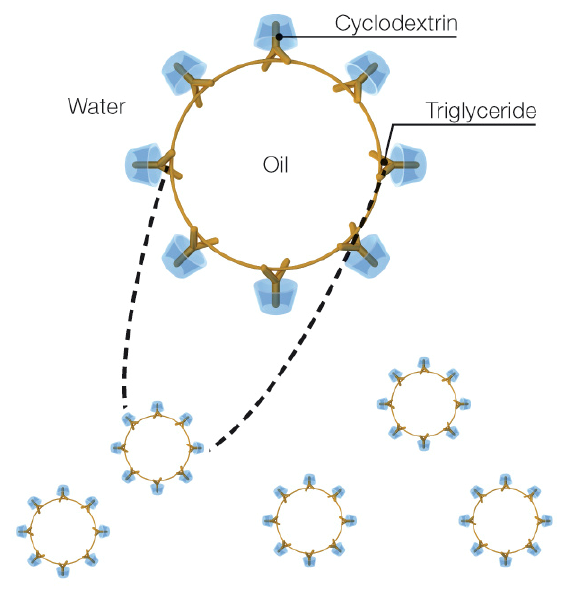ANSWER
The ring-shaped molecules of alpha-cyclodextrin are ideally suited as emulsifiers for food containing a mixed oil-and-water phase. The interior of this doughnut-shaped cyclodextrin is lipophilic (dissolves in fats), while it’s exterior is hydrophilic (dissolves in water). Fatty acids groups can “slip” into the interior of the alpha-cyclodextrin and form a surfactant structure, suitable as an emulsifier.
Thus, it can be used for a variety of emulsion applications in the food industry: wherever it is necessary to stabilize an oil-in-water emulsion, to modulate its viscosity or to achieve a stable emulsion at elevated temperatures. This makes alpha-cyclodextrin an ideal emulsifier in applications such as sauces, dressings, mayonnaise, beaten foods, whipped desserts or margarines.
Depending on requirements, alpha-cyclodextrin can adjust an emulsion’s viscosity and thus its “mouthfeel” – from fluidity similar to ketchup through to a firm texture resembling sugar frosting.

Reference
Osterloh, P. (2011). Stable emulsions by molecular encapsulation. 36, 40-43.

